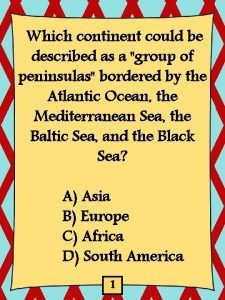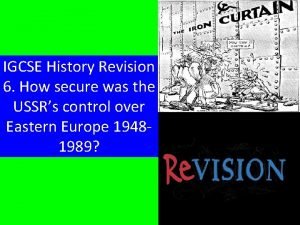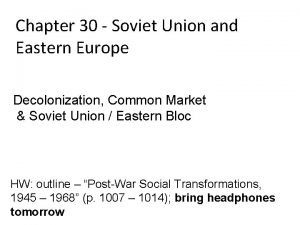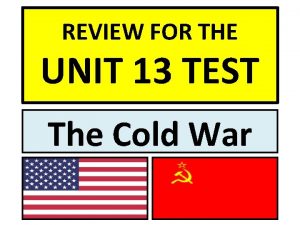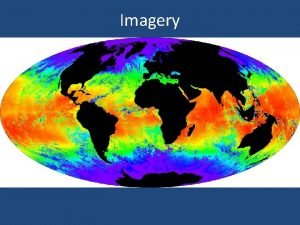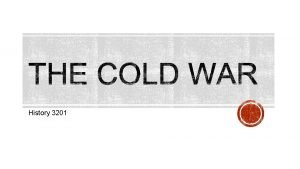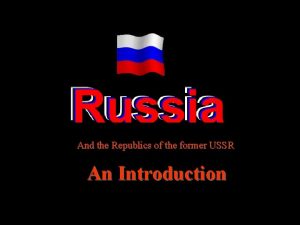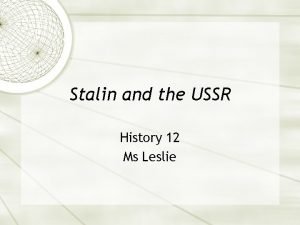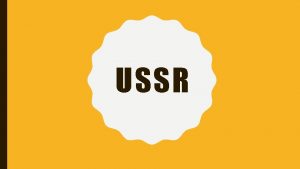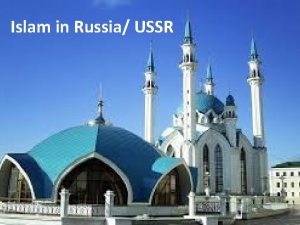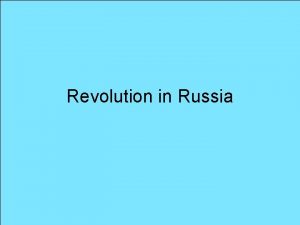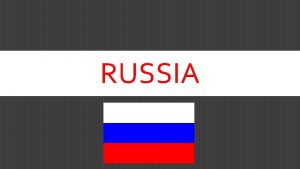From Russia to the USSR State Standard W








- Slides: 8

From Russia to the USSR State Standard W. 42: Compare the connection between economic and political policies, the absence of a free press, and systematic violations of human rights during Stalin’s rise to power in the Soviet Union. B. A. How did Stalin gain and maintain power in the USSR? Describe Stalin’s Five-Year Plans and how they affected Russia.

A. How did Stalin gain and maintain power in the USSR? • Between 1920 and 1922, Lenin and his communist regime began to experience of economic problems: • Drought caused famine • Farmers began hoarding the food they were growing to sabotage the Communists. • Why would they do that? • As many as 5 million died • Industry collapsed along with farming.

A. How did Stalin gain and maintain power in the USSR? • In response, Lenin created the New Economic Policy (NEP). • Peasant farmers were allowed to sale their produce openly (capitalism). • Small businesses that employed less than 20 workers could be privately owned and operated (also capitalism). • In the process, Lenin created the Union of Soviet Socialist Republic (USSR), or the Soviet Union. • Lenin intended for the NEP to be temporary but before he could disband it, he died in 1924.

A. How did Stalin gain and maintain power in the USSR? • Upon Lenin’s death, two candidates to replace him emerged: • Leon Trotsky • Wanted to end the NEP • Wanted to rapidly industrialize (what would that do to the peasant farmers? ) • Wanted to spread communism abroad for the survival of the revolution • Joseph Stalin • • Trotsky’s personal rival Wanted to continue the NEP Wanted to protect the peasants by not industrializing too fast Wanted to focus on building Russia’s socialist state, not spreading abroad

A. How did Stalin gain and maintain power in the USSR? • Even though Lenin had left the position for Trotsky in his will, Stalin used his position to gain leverage with the Communist Party, and they eventually elected to choose Stalin as the next leader. • Upon election, Stalin abolished the Bolshevik party and established himself as sole dictator. • Trotsky was forced out and went to live in Mexico. He was likely killed at Stalin’s orders in 1940.

B. Describe Stalin’s Five-Year Plans and how they affected Russia. • In 1928, Stalin started the first of his Five-Year Plans. • The purpose of the first plan was to rapidly industrialize Russia. • Capital goods used to produce other goods (during the next five years) was the focus of this plan. • Ex: machinery in factories • During the first ten years, the production of heavy machinery and steel quadrupled. • Oil production was doubled.

B. Describe Stalin’s Five-Year Plans and how they affected Russia. • Social and political costs of Stalin’s Five-Year Plans: • Stalin abandoned investing in housing for his growing number of factory workers. • Living conditions were miserable. • Wages of factory workers declined 43% between 1928 – 1940. • Collectivization – Stalin took the farm land of the peasants under government control. • Farmers responded by hoarding food and killing livestock. • In response, Stalin became more aggressive (26 million to 250, 000) • The Great Purge • It is estimated that 8 -20 million never returned from labor camps or were executed during this period.

C. What is the difference between authoritarian and totalitarian governments? What was their goal in the West? • Authoritarian Government: controlled by a one party system, usually led by a dictator. • Totalitarian Government: Extreme version of authoritarian. Dictators seek to control every aspect of citizen life. • Limit freedoms • Control both social and economic institutions • Use “secret” police to force ideology on citizens (which could also happen in an authoritarian system) • Includes communism and fascism • Great Britain and France were the only two European nations that remained democratic during this time period.
